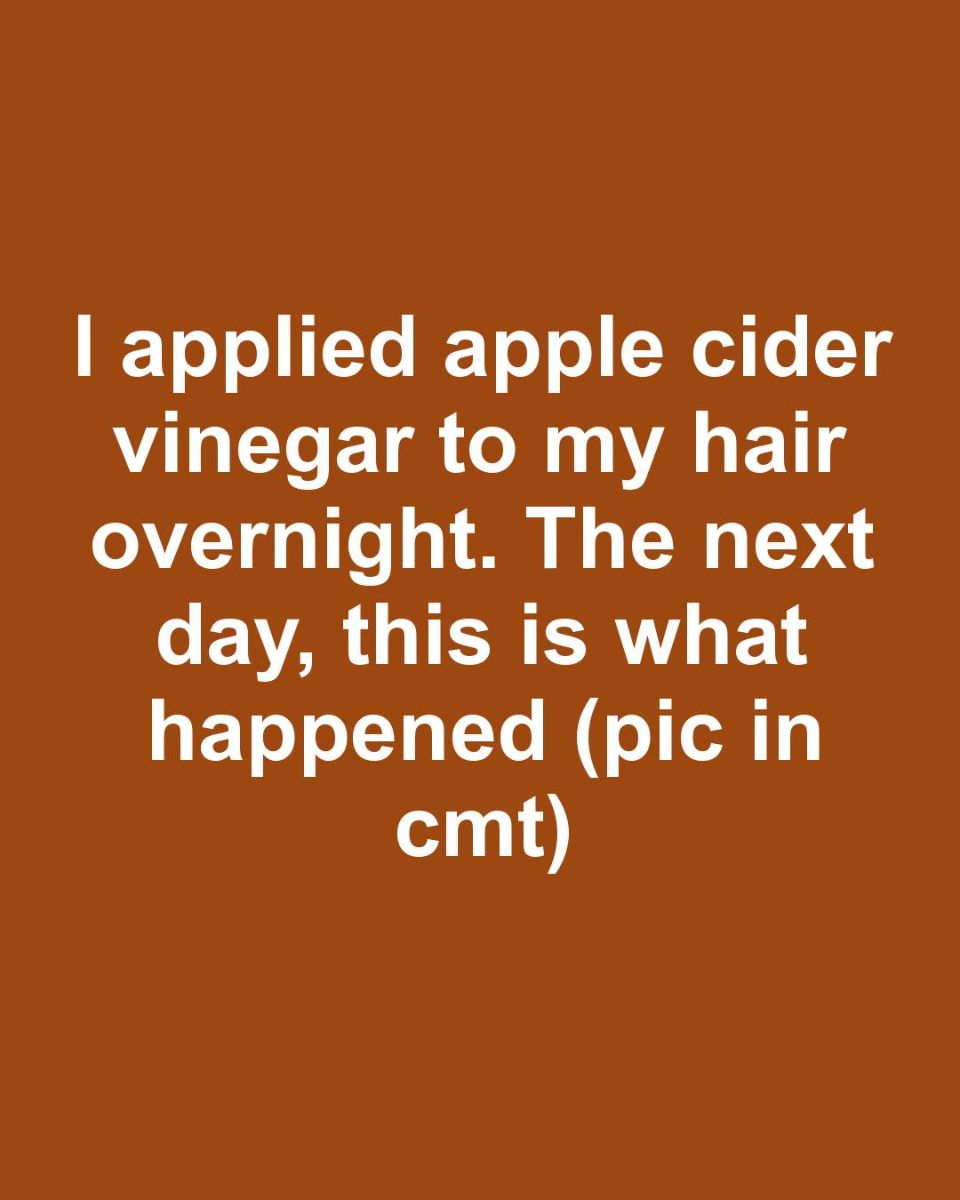
Apple cider vinegar (ACV) has been a staple in natural beauty and health regimens for centuries. Known for its acidic nature and rich nutrient profile, ACV is often touted as a miracle solution for various hair issues. From balancing scalp pH to enhancing shine, this humble kitchen ingredient is making waves in the beauty industry. But what happens when you apply it to your hair overnight? In this article, I explore the effects of leaving apple cider vinegar in my hair for an extended period and share my findings.
Understanding the Benefits of Apple Cider Vinegar
Apple cider vinegar is renowned for its ability to restore the natural pH balance of the scalp, which can be disrupted by shampoos and styling products. Its acetic acid content helps to remove product buildup, reduce dandruff, and add shine to dull hair. Additionally, ACV is rich in vitamins and minerals that nourish the hair, making it stronger and more resilient. The antimicrobial properties of ACV also make it an effective treatment for itchy or flaky scalps.
Preparing for the Overnight Hair Treatment
Before applying ACV to my hair, I gathered the necessary supplies: raw, unfiltered apple cider vinegar, a spray bottle, a shower cap, and an old towel to protect my pillowcase. I decided to dilute the vinegar with water in a 1:1 ratio to minimize any potential irritation. After mixing the solution, I performed a patch test on a small section of my scalp to ensure there was no adverse reaction.
Application Process: How I Applied Apple Cider Vinegar
With the diluted ACV solution ready, I sprayed it evenly onto my hair and scalp, ensuring full coverage. I gently massaged my scalp to stimulate blood circulation and help the vinegar penetrate deeper. Once my hair was thoroughly saturated, I covered it with a shower cap to prevent the solution from drying out and to contain any drips. I then wrapped a towel around my pillow and went to bed, eager to see the results the next morning.
The Morning After: Observations and Initial Reactions
Upon waking up, I noticed a faint vinegar scent lingering in the air. My hair felt slightly damp but not overly saturated. I removed the shower cap and was pleasantly surprised by the lack of stickiness or residue. The vinegar had dried without leaving any noticeable film on my hair. I proceeded to rinse my hair with lukewarm water, followed by a gentle shampoo to remove any remaining vinegar smell.
Analyzing the Effects on Hair Texture and Shine
After drying my hair, I immediately noticed a difference in texture. My hair felt softer and smoother to the touch, with a noticeable increase in shine. The cuticles appeared to be more sealed, reducing frizz and enhancing the overall sleekness of my hair. The vinegar seemed to have effectively removed any buildup, leaving my hair looking and feeling refreshed.
Impact on Scalp Health and Hair Growth
My scalp felt clean and less itchy, indicating that the ACV had helped to balance its pH and reduce any irritation. While it’s too soon to comment on long-term effects on hair growth, the improved scalp health could potentially promote healthier hair growth over time. I did not experience any dryness or flakiness, which can sometimes occur with other treatments.
Potential Downsides and Precautions
While my experience was largely positive, it’s important to note that apple cider vinegar is acidic and can cause irritation if not properly diluted. Individuals with sensitive skin or scalp conditions should exercise caution and perform a patch test before full application. Additionally, frequent use of ACV may lead to dryness, so it’s best to use it sparingly and follow up with a conditioner or hair mask.
Comparing with Other Hair Treatments
Compared to other hair treatments like deep conditioning masks or oil treatments, ACV offers a natural and cost-effective alternative. While it may not provide the same level of moisture as oil treatments, its ability to clarify and add shine makes it a valuable addition to a hair care routine. Unlike chemical-laden products, ACV is free from synthetic ingredients, making it a safer option for those seeking a more natural approach.





